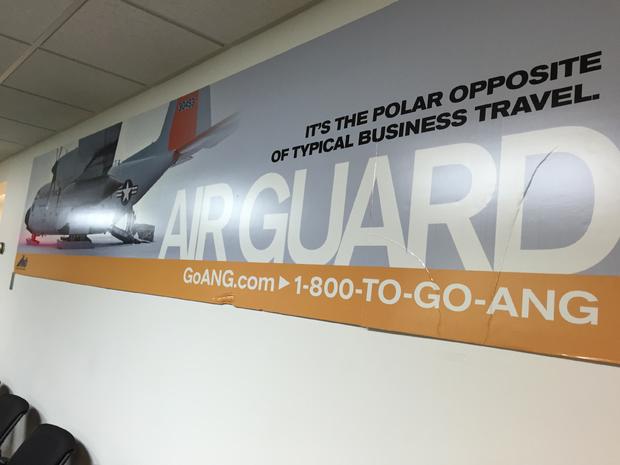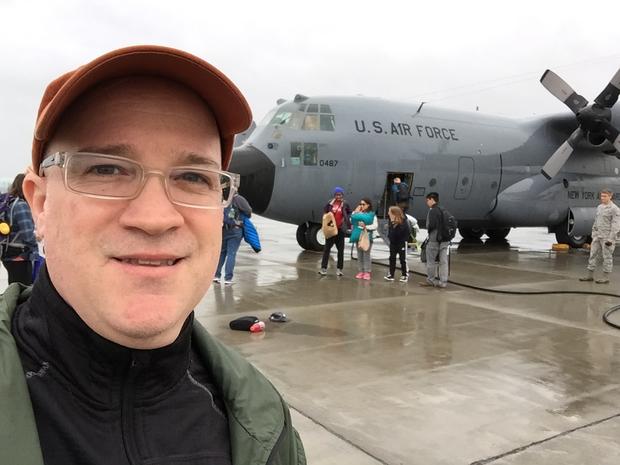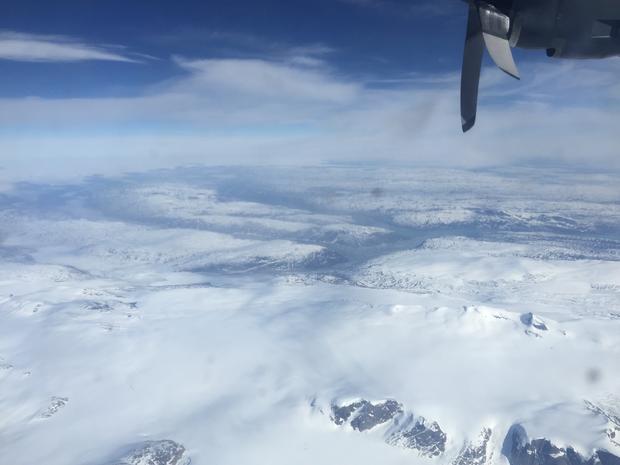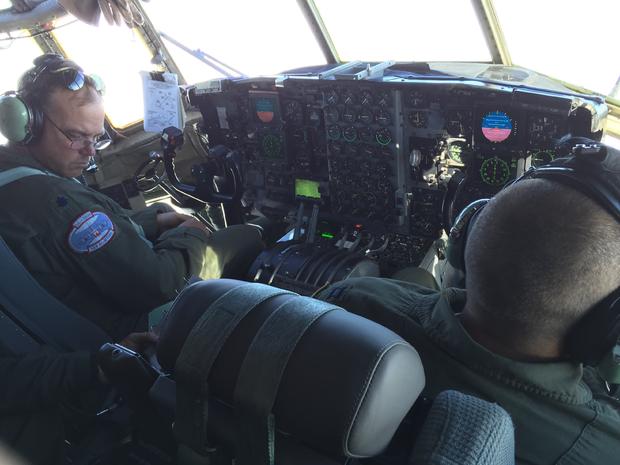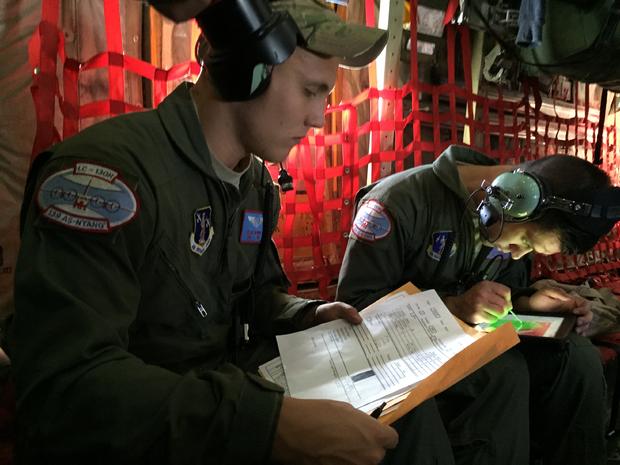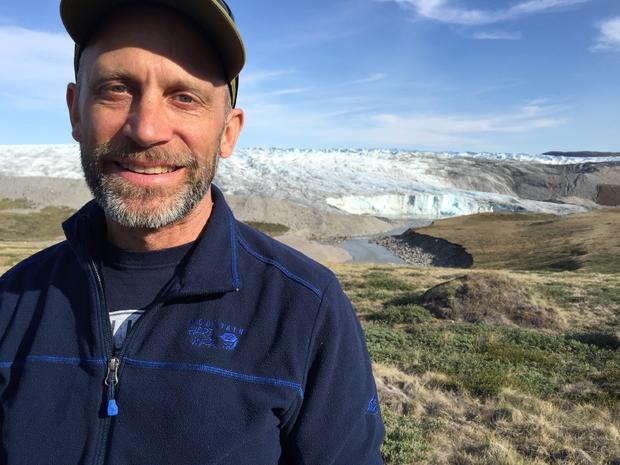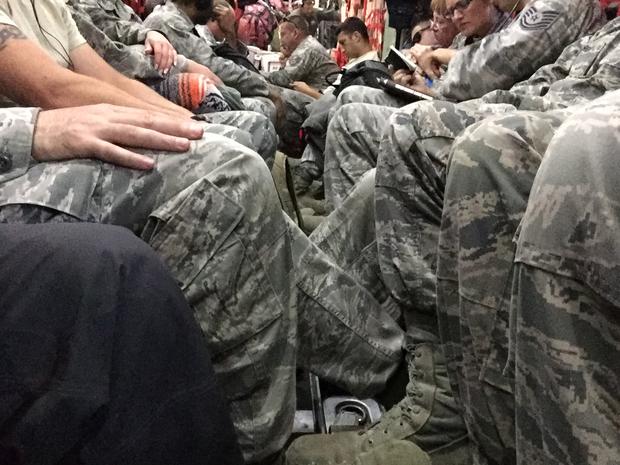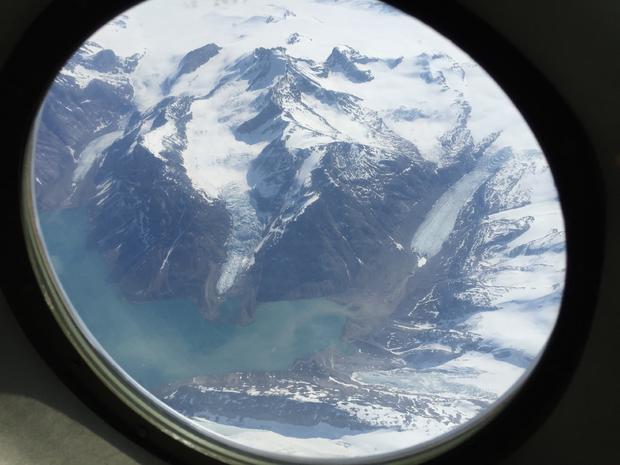Reporter's Notebook: 72 Hours in Greenland
CBS News producer T. Sean Herbert recently traveled to Greenland for an assignment on climate change. He filed this Reporter's Notebook on his experience.
Sunday, June 28
The alarm goes off at 4:30am at my hotel a few miles from my destination -- the Stratton Air National Guard Base in Scotia, New York, home to the 109th Airlift Wing (109thAW).
Each year the New York Air National Guard invite a small group of journalists to tag along with the 109thAW as they show off their unique capabilities.
In addition to flying missions in support of ongoing military efforts worldwide and assisting during natural disasters, they fly the world's only ski-equipped LC-130's -- nicknamed "Skibirds." Because their planes can land on snow, they fly to unique areas of the world.
At the base, 20 miles northwest of Albany, New York, I join others assembled to fly to Kangerlussuaq, a village of less than 600 people on the west coast of Greenland -- the largest island on the planet. The recruitment poster on the wall says it all: "It's the polar opposite of typical business travel. Air Guard."
Depending on the amount of cargo, these aircraft can either be comfortable for the passengers on board, or quite cramped. There are no traditional airline seats, but rather cargo netting and canvas benches provided with seat belts.
We're traveling on the more common C-130 Hercules referred to here as a "Wheelbird." With me on the flight -- besides journalists -- are teachers, scientists and five American high school students looking forward to meeting their counterparts from Denmark and Greenland participating in a scientific and cultural exchange.
Called the Joint Science Education Program (JSEP), this partnership is supported by the National Science Foundation (NSF) and provides the group with three weeks of intense emersion on the island of ice. The weather at takeoff is rainy and temperatures are in the low 60s.
Scores of scientists from around the globe journey to Greenland this time of year. As the ice that covers much of the least densely populated country in the world thaws, they are measuring the effects of climate change and the impact humans are having on the world. The amount of cargo and passengers on this flight requires that half way to Greenland, we land at a Canadian Forces Base (CFB) in Goose Bay, Labrador, to refuel.
On the second leg of the flight, we are allowed to walk about the belly of the C-130 and take turns peeking out the small windows throughout the fuselage.
As we approach the Arctic Circle, the landscape below changes color from plush green to stark white. After crossing the Labrador Sea, ice can be seen floating in Baffin Bay. Once over Greenland, the ice and snow softly blankets the surface.
We all buckle up as we begin our descent along a fjord into Kangerlussuaq, a former Cold War outpost with runways long enough for B-52 bombers when it was Sondrestrom Air Base. I check in at a modest hotel on the opposite side of the tarmac from the headquarters (HQ) of the flight operations for the 109thAW.
The weather is actually much nicer here than it was when we left upstate New York -- about 67 degrees and only a few clouds in the skies. After about six hours flying, and losing two hours to the time difference, I grab a bite to eat and try to get some sleep despite the fact that at 10:30pm the night sky is still bright -- this part of the world is bathed in sunlight, 24-7.
Monday, June 29
At 7:45am, I join the other journalists at the HQ building to film preps for the 455 mile journey northeast aboard an LC-130 Skibird to deliver supplies to the NSF's Greenland Environmental Observatory (GEO) located in the center of the ice sheet at 10,530 feet above sea level.
The weather forecast calls for mid-20s Fahrenheit, unseasonably warm, with lots of sun and very little wind. It's about a two hour flight from Kangerlussuaq to the GEO location. I shoot footage of the loading process and then take a selfie in front of the nose art on the plane. "City of Albany" is the nickname of this aircraft, which as a resident of New York, brings a smile to my face. We take off around 11:00 am.
The other journalists on this Skibird are first-timers. I was here once before, back in 2007, and the weather was much colder, well below zero and almost no visibility at GEO. Once airborne, we have plenty of room to spread out and claim a window to film through to get footage as we head toward the summit of the ice sheet. The crew in the belly of the plane is going over paperwork, so I ask for access to the cockpit and film the crew mid-flight.
I'm wearing my own cold-weather gear while the others are putting on handout military gear required on all flights in the polar regions in case of an emergency landing. Theirs is much heavier and bulkier then my personal apparel.
As the cargo is unloaded and the Skibird refueled, it's a protocol that the engines remain running for fear that they won't re-start stranding precious cargo or passengers.
I only have about 35 minutes to shoot footage and line up and shoot interviews, before being asked to be back on the plane. It's a sprint at altitude, more physically challenging than most segments I produce for CBS News.
I board a ski mobile with a sled and head right to the largest building in the complex, referred to as the "Big House." I interview a few researchers then step outside and ask the woman driving the ski mobile to take my photo in front of the only signage at GEO.
On the flight back, the Skibird has 19 extra passengers -- researchers the NSF is rotating out to make room for the next batch needing time on the ice at GEO. It's a bit cramped. Once back in Kangerlussuaq, I spend the rest of the day touring the surrounding area, filming some beauty shots and setting up interviews for the next day.
Tuesday, June 30
At 7am, I meet with scientist Lauren Culler, who flew here with me on Sunday. An ecologist at Dartmouth College in Hanover, NH, she has spent the past few summers in Greenland studying insects in the lakes and ponds surrounding Kangerlussuaq. She drives me to a pond that was flourishing in 2012. Now it's bone dry.
"Out of the 10 or so ponds that I have been keeping track of, about three of them have completely disappeared since 2012," said Culler. "And I know that in this area in particular we tend to see a lot of drying ponds in the landscape. So it's not every pond that's drying, but certainly we are seeing this trend of less and less water staying on the landscape."
Afterwards, I grab lunch at the Kangerlussuaq International Science Support (KISS) facility. It's the hub for most of the visiting NSF scientists. Glaciologist Joel Harper is spending a few days here before spending the next four weeks camped out on Russell Glacier about 48 miles east of town.
Harper takes me 19 miles down a dirt road to the site where he is staging his supplies at the base of Russell Glacier. Harper, a professor at the University of Montana, is spending his ninth summer in Greenland studying the mechanics of how glaciers and ice move.
Once back, I spend time with the JSEP high school students from the U.S. The American kids are all very impressive. Henry Hao, from San Diego, and Natalie Ezeggwu, from Tucson, have never seen ice and snow before. Aislinn Slaugenhaupt, from Summerville, Pennsylvania, is looking forward to her time on the ice.
"I don't think a lot of high school students anywhere, let alone the United States, know a lot about polar science," said Slaugenhaupt. "I'm definitely excited to get more engaged in polar science especially as something that young people can do to take action for our future."
Wednesday, July 1
The phone in my hotel room rings at 5:15 am. It's time to get packed and head back over to the HQ building for the last filming opportunities. Precious cargo needs to get from the top of the ice sheet back to the states for analysis, including perishable ice cores.
I'm wearing a net over my head as I film a Wheelbird being loaded because the mosquitoes are out in force. It's peak season for the biting insects.
After filming the takeoff, it is our turn to load up and leave Greenland. We're flying a Skibird back to the U.S. with no plans for refueling in Canada. Estimated Time of Arrival (ETA) in Scotia is 1:30pm.
Instead, there is an unexpected detour to Goose Bay that lasts most of the day as we wait the arrival of a replacement aircraft. The New York Air National Guard brought in pizza and water to feed the troops, which has now doubled in size. At about 8:30pm, we depart CFB for Stratton Air National Guard Base on a cramped Wheelbird with 43 passengers -- mostly members of the 109thAW. I post a selfie to Facebook asking, "Guess which one I am on this crammed @109thAW aircraft to Scotia, tonight?"
On the way back I take a series of photos on the Skibird from my cell phone of the views out the small window. We touched back down in Scotia after midnight, a whirlwind 72-hour tour in Greenland complete. I post the photos on Facebook, asking: which "arctic circle" do you "like" best? Here's the winner:
